
Lomatia tasmanica, commonly known as King's lomatia, is a shrub of the family Proteaceae native to Tasmania. Growing up to 8 metres (26 ft) tall, the plant has shiny green pinnate (lobed) leaves and bears red flowers in the summer, but yields neither fruit nor seeds. King's lomatia is unusual because all of the remaining plants are genetically identical clones. Because it has three sets of chromosomes and is therefore sterile, reproduction occurs only vegetatively: when a branch falls, that branch grows new roots, establishing a new plant that is genetically identical to its parent.

International Botanical Congress (IBC) is an international meeting of botanists in all scientific fields, authorized by the International Association of Botanical and Mycological Societies (IABMS) and held every six years, with the location rotating between different continents. The current numbering system for the congresses starts from the year 1900; the XX IBC was in Madrid, Spain, July 2024. The XXI IBC is planned to be in Cape Town, South Africa, in July 2029.
Winifred Mary Curtis was a British-born Australian botanist, author and a pioneer researcher in plant embryology and cytology who played a prominent role in the department of botany at the University of Tasmania (UTAS), where the main plant science laboratory is named in her honour.

Eucalyptus vernicosa, commonly known as varnished gum, is a species of shrub or a mallee that is endemic to mountainous areas of Tasmania. It has smooth greyish bark, crowded, egg-shaped to elliptical or round leaves, flower buds singly or in groups of three in leaf axils, white flowers and hemispherical or bell-shaped fruit.
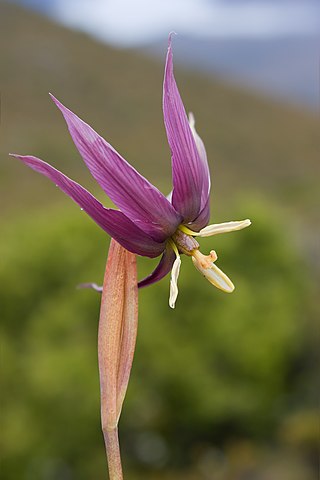
Isophysis is a genus of herbaceous, perennial and rhizomatous plants in the Iris family (Iridaceae). A monotypic genus formerly known as Hewardia, it contains a single species, Isophysis tasmanica is a Palaeoendemic found only in the south-west of Tasmania.
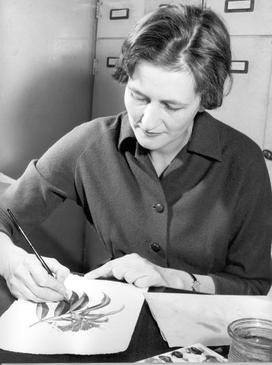
Elsie Margaret Stones, was an Australian botanical illustrator.
Stonesiella selaginoides, the clubmoss bush-pea, is a species of flowering plant in the family Fabaceae. It belongs to the subfamily Faboideae. It is the only member of the genus Stonesiella and is endemic to Tasmania. It is named to recognise Australian botanical illustrator Margaret Stones.
Helen Margaret Gilkey (1886–1972) was an American mycologist and botanist, as well as a botanical illustrator and watercolor artist She was born on March 6, 1886, in Montesano, Washington, and moved to Corvallis, Oregon, with her family in 1903. She died in 1972 at the age of 86.
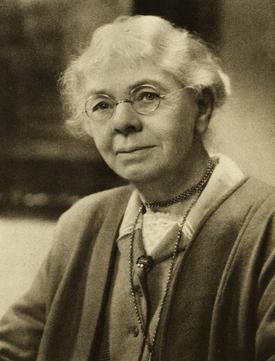
Lilian Snelling (1879–1972) was "probably the most important British botanical artist of the first half of the 20th century". She was the principal artist and lithographer to Curtis's Botanical Magazine between 1921 and 1952 and "was considered one of the greatest botanical artists of her time" – "her paintings were both detailed and accurate and immensely beautiful". She was appointed MBE in 1954 and was awarded the Victoria Medal in 1955. The standard author abbreviation Snelling is used to indicate this person as the author when citing a botanical name.
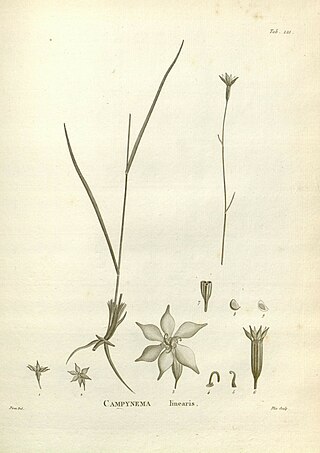
Campynema is a genus in the family Campynemataceae first described in 1805. It contains only one known species (monotypic), Campynema lineare, endemic to the island of Tasmania in Australia. Its closest relative is Campynemanthe, endemic to New Caledonia, sole other genus of the family.
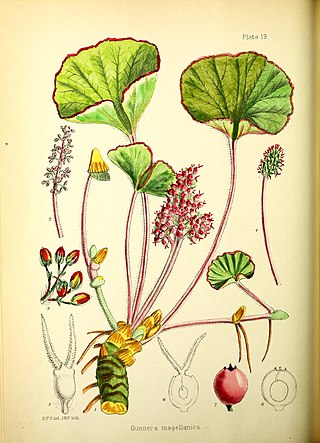
Elinor Frances Vallentin (formerly Nichol; was a British botanist and botanical illustrator who made scientifically significant collections of botany specimens in the Falkland Islands. She co-authored the book Illustrations of the flowering plants and ferns of the Falkland Islands in 1921 with Enid Mary Cotton, a fellow botanist. This work was regarded as being particularly valuable because of Vallentin's botanical illustrations. The standard author abbreviation Vallentin is used to indicate this person as the author when citing a botanical name.

The Flora Antarctica, or formally and correctly The Botany of the Antarctic Voyage of H.M. Discovery Ships Erebus and Terror in the years 1839–1843, under the Command of Captain Sir James Clark Ross, is a description of the many plants discovered on the Ross expedition, which visited islands off the coast of the Antarctic continent, with a summary of the expedition itself, written by the British botanist Joseph Dalton Hooker and published in parts between 1844 and 1859 by Reeve Brothers in London. Hooker sailed on HMS Erebus as assistant surgeon.
The Flora Tasmaniae is a description of the plants discovered in Tasmania during the Ross expedition written by Joseph Dalton Hooker and published by Reeve Brothers in London between 1855 and 1860. Hooker sailed on HMS Erebus as assistant surgeon. Written in two volumes, it was the last in a series of four Floras in the Flora Antarctica, the others being the Botany of Lord Auckland's Group and Campbell's Island (1843–1845), the Botany of Fuegia, the Falklands, Kerguelen's Land, Etc. (1845–47), and the Flora Novae-Zelandiae (1851–1853). They were "splendidly" illustrated by Walter Hood Fitch.

Trochocarpa thymifolia is a species of flowering plant from the family Ericacae and is endemic to Tasmania. It is a widespread alpine and subalpine shrub with small leaves, pink to red flowers and blue to purple fruit. Originally described by botanist Robert Brown in 1810, it is a widespread Tasmanian endemic that inhabits the state's mountain regions.
Celmisia saxifraga, commonly known as the small snow daisy, is a perennial herb in the Asteraceae family. It is native to Tasmania and Victoria, where it grows in alpine grasslands above the snowline.
Sprengelia distichophylla is a species of flowering plant in the heath family Ericaceae and is endemic to Tasmania. It is a tufted shrub that typically grows to a height of 51–76 mm (2.0–3.0 in) with leaves about 2 mm (0.079 in) long, arranged in two closely overlapping rows, with the bases sheathing the stem. The flowers are arranged singly in leaf axils and are white, about 5 mm (0.20 in) long and bell-shaped. Flowering occurs in summer.

Olearia tasmainca is a species of flowering plant in the family Asteraceae and is endemic to Tasmania. It is a shrub that typically grows to a height of 1.0–1.5 m and has oblong to egg-shaped leaves with the narrower end towards the base, 19–40 mm (0.75–1.57 in) long and with a blunt tip. The heads or daisy-like "flowers" have up to 8 ray florets. Flowering mainly occurs in January and the fruit is a smooth achene.

The Hon. Rose Maud Talbot was an English-born Irish farmer and philanthropist, who emigrated to Tasmania, Australia.
Dennis Ivor Morris was a British-born Australian botanist.

Scleranthus fasciculatus, commonly known as spreading knawel, is a rare, spreading, non-woody herb found in the south-eastern states of Australia and introduced to New Zealand. The species is found in dry grassland habitats and requires the maintenance of inter-tussock spaces for its establishment and persistence. A number of anthropogenic factors have contributed to the species decline such as impacts from land clearing, road construction and maintenance, and herbicide application.















